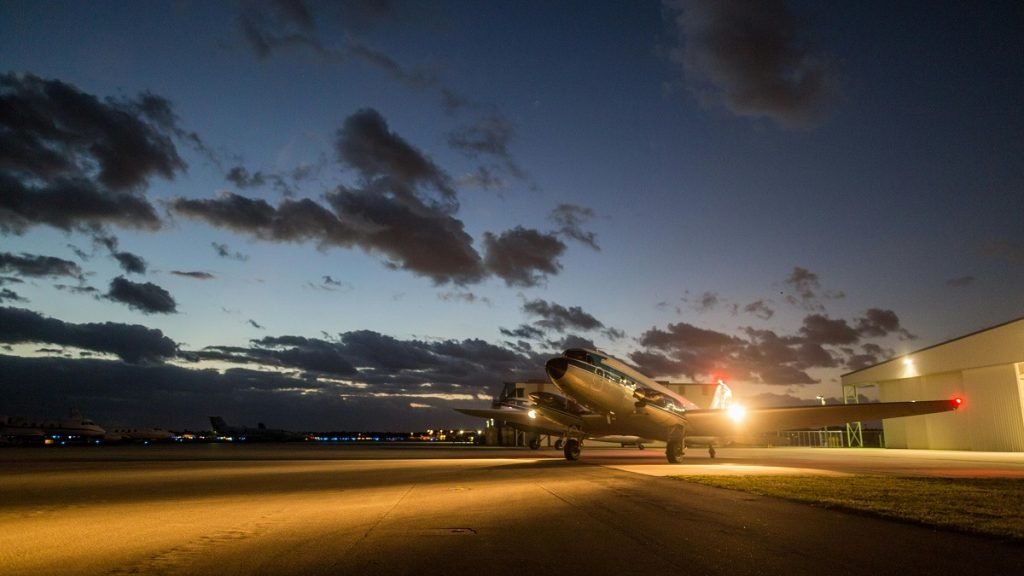The design philosophy that informs each and every Boeing and Airbus product sets them apart from one another.
Boeing vs. Airbus: A Titanic Battle. Just take a look at our daily lives: enthusiasts argue over the best muscle car, photographers contrast Nikon with Canon, and everyone has a viewpoint on Pepsi versus Coke or iPhone against Android.
Thus, it should come as no surprise that brand-aficionados argue about airplanes. The major stuff always steals the show, even when the little things garner a lot of attention (who hasn’t questioned which is better, Piper or Cessna?).
All the people who enjoy talking about Boeing and Airbus are the pilots at the controls and the passengers in 12B and 12C.
Essential Design Disparities
The design philosophy that informs each and every Boeing and Airbus product sets them apart from one another. Although it’s hard to avoid generalizing in this situation, the idea is straightforward.
When it comes to the flight controls of the airplane, Boeing has always operated traditionally. The flight control surfaces are moved by the pilot using the controls.
The system is enhanced with automation and autopilots to lessen the strain for the pilot. Ultimately, the pilot retains the ability to override the automation.
Modern Airbuses handle flight control systems differently. By adjusting the controls, the pilot communicates their intentions to the computer and automated systems.
The flight control surfaces are then moved by the computer in accordance with their instructions. The plane’s ability to roll or pitch as much during a particular flight phase is limited by this programming.
A pilot in a Boeing has the ability to tilt the aircraft into a stall.
The pilot will be made aware of the oncoming stall by warning devices such as the pusher, stick shaker, and other ones. Since the 1920s, Boeing has manufactured aircraft in this manner.
Although technology has advanced and expanded, pilot training and their familiarity with the aircraft’s systems remain crucial for maintaining safety.
On the other hand, a modern Airbus will stay within its regular flying envelope even if the pilot decides to enter a stall by using the same pitch-up. It will increase power for a standard ascent and pitch to its maximum.
Airbus versus Boeing
This is the most advanced version of “fly-by-wire” technology. The safe pre-programmed profiles of the aircraft cannot be overridden, nor can the pilot directly use the flight controls.
Flying an Airbus requires being “seat of your pants,” as the controls don’t give the pilot any input. There are very few preset locations on the fully automated thrust levers.
Founded in the 1970s by a multinational conglomerate of European manufacturers, Airbus is a considerably younger firm. Since the early days of computers were used to create their goods, they have always embraced technology to raise the standard of aviation safety.
Which approach is superior to the other? Excellent query. Though it’s safe to state that Boeing and Airbus approach aircraft design differently, we won’t resolve that argument today.
It should be noted that flight envelope protection software technologies have been included in even more recent Boeing designs.
Business Disparities between Airbus and Boeing
These businesses differ greatly from one another in terms of their origins and organizational structure.
Boeing
Ever since the beginning of aircraft, Boeing has existed. The US now has coast-to-coast air service thanks to the Boeing 247, which was the first aircraft to successfully navigate the Rocky Mountains. That was back in 1933.
Boeing produced the now-famous B-17 and B-29 bombers during World War II.
The current Boeing firm is the outcome of numerous mergers that have occurred over time. Most notably, their largest domestic rival was eliminated as a result of the McDonnell Douglass/Boeing merger in 1997.
For many years, Boeing stood for the supremacy of the US aerospace sector. The first commercial jet airliner, the 707, is credited with launching the Jet Age.
The 747, also referred to as the Queen of the Skies, was the first wide-body, long-haul “jumbo jet” to be designed.
Today, Boeing is organized into three divisions: commercial aircraft, military, and spacecraft manufacture. North Charleston, South Carolina, is home to a sizable plant, while its main production facility is located in Everett, Washington.
Airbus vs. Boeing aircraft
Airbus
When the governments of France and Germany decided to form a cooperative in order to better compete with the American aerospace industry, Airbus was born in 1969.
Several European manufacturers demonstrated a great deal of innovation, but their advantages in economies of scale were not sustained. These manufacturers could tackle far larger projects with higher manufacturing costs if they banded together and cooperated. The objective was to compete globally on the basis of technology from the beginning.
French Aérospatiale, British Aerospace, German Deutsche Airbus, and Spanish CASA eventually came together to establish the firm. The businesses collaborated to design and build the A300, their first aircraft.
When the aircraft took to the air for the first time in 1972, it defeated other wide-body aircraft of the era, such as the Lockheed L-1011.
Even though the organizational structure varies periodically, Airbus currently has business divisions with a history that dates back to:
Company called European Aeronautic Defense and Space (EADS)
German DASA (Dornier, Messerschmitt, MTU, Daimler-Benz Aerospace) British Hawker Siddeley and British Aerospace (BAC/BAE Systems)
Aircraft of the Fokker Eurocopter Bombardier C-series (now the A220)
Commercial aircraft, helicopters (previously Eurocopter), defense, space, and security systems are among Airbus’s current business segments.
With additional locations in Hamburg, Germany, and Seville, Spain, their main facility is located in Toulouse, France. Tianjin, China, and Mobile, Alabama, have added more assembly lines.
Comparing Airbus and Boeing models
Boeing and Airbus have collaborated to provide the aviation sector with a wide array of choices.
They look at what each other is producing and strive to improve it, while also taking advice from the industry regarding what is required.
It’s a contest to see who can figure out the winning recipe and receive more airline orders year after year.
The A300, Airbus’s debut aircraft, was designed to represent a new, more effective class of wide-body aircraft. Its lighter airframe and twin-engine configuration outperformed rivals like the Lockheed L-1011 and the tri-jet McDonnell Douglas DC-10/MD-11.
It forced Boeing to work on the B767 series, but Airbus could control this segment of the airline market before it entered service.
Aircraft Types: A320 vs. B737
Both businesses have profitable narrow-body, single-aisle aircraft as their cash cow product.
Since the -100’s first flight in 1984, the Boeing 737 has been in service. Although the -200 was more popular, the line has continued to get better over time because to engine updates.
The Next Generation 737 aircraft were either -600s or -800s, with the -800 being the most widely used model. A lot of the NG designs’ advancements were prompted by rivalry from Airbus’s A320. The newest models are the 737MAX series, which debuted in 2017.
Regrettably, the FAA and other international aviation authorities grounded the MAX series following a string of crashes and issues.
This put Boeing’s hegemony in the market in jeopardy and presented Airbus with an opening; Boeing was essentially unable to sell or manufacture 737 aircraft for more than a year until a solution was discovered and approved.
Although the MAX was put back into service in 2020, the controversy hurt its reputation and made Airbus the top aircraft manufacturer in the world.
Airbus versus Boeing
Since 1967, Boeing has supplied 11,431 airframes for all 737 versions combined.
Introduced in 1987, the A320 family (consisting of the A318, A319, A320, and A321) was designed to rival the popular B737. The aircraft, which featured a glass cockpit brimming with technological innovation for its day, was the first real fly-by-wire aircraft.
In 2010, it underwent an update with new engines and was renamed the A320neo. The A318 and A319 are smaller versions, while the A321 is a stretched model with additional seating.
The A320 overtook the B737 to become the greatest-selling aircraft in history when standing orders are taken into account. 10,256 were in use with 340 operators as of 2023. With the A320 type, Airbus was able to take on Boeing globally.
Wide-Body: B767/777 versus A330/340
Using an update for their aging A300, Airbus set out to challenge Boeing for market share in the larger, long-range plane segment. Their goals were the new B777 and the successful B767.
The A330 and A340 aircraft families were created specifically for this use. A wide-body twin jet option for medium- to long-haul flights was the A330.
The A340 was a four-engine aircraft designed for long-haul carriers seeking a more cost-effective option than the B747. Although the A330 was not a great success, the more successful and up-to-date A330 was (and still is).
A350 vs. B787: New Generation Wide-Body Airliners
In 2003, Boeing unveiled the 787 Dreamliner program, and in 2004, Airbus did the same with the A350.
These twin aircraft were essentially modernized versions of the now-antiquated A330 and B767 designs. Thanks to new technologies, it was feasible to create comparable-sized aircraft that were cheaper to operate, more efficient, and produced fewer greenhouse gas emissions during each flight.
Both are ultramodern airliners that make considerable use of composites and carbon fiber in their airframes. Their designs have also pushed the limits of what is practically possible to accomplish with current manufacturing and engine technologies.
Jumbos: B747 versus A380
The Boeing 747, dubbed the “Queen of the Skies,” ruled the size market for many years.
The first to meet it head-on was Airbus, which produced the even bigger double-decker A380. The purpose of these aircraft, which were quad-jets, was to minimize the cost per seat mile on long-haul, high-volume flights.
Ultimately, the issue with both models was that they necessitated airlines to perceive a strong, sustained worldwide demand for long-haul air travel.
The COVID outbreak and its enduring consequences on international air travel could have been the icing on the cake for them both.
However, it’s important to remember that newer models, such as the long-range A350 and B777 twin planes, can travel the same routes—and often even longer ones—for a lot less money.
For instance, the A350-1000 can travel up to 8,700 nautical miles with up to 480 people.
However both designs were successful in their own right, their manufacturers have sadly since decommissioned them, however many aircraft are still in use today all over the world.
A380 Airbus vs. 747 Boeing
Prospects for Airbus vs. Boeing
When it comes to business, Airbus and Boeing are a duopoly—two companies that control a single industry.
Although there are some new entrants into the aviation industry, it will likely take decades for these businesses to overtake Boeing and Airbus in terms of market dominance.
For many years, Airbus and Boeing have openly criticized their competitor for what they perceive to be unfair business practices. Boeing is quick to point out that Airbus can undercut its prices in order to gain market share because Airbus receives subsidies from the governments that support it.
Airbus, on the other hand, contends that Boeing unfairly controls contracts with US government and airline entities.
Airbus vs. Boeing: What Comes Next?
Several people are curious about what will happen after the big models are discontinued. The “New Midsized Airplane,” which some have dubbed a replacement for the A330 and B767 fleets, is most certainly going to be the target. Boeing has not yet revealed their plans, while Airbus has revealed the A330neo.
Boeing and Airbus are ultimately more alike than distinct. Both of them have global networks of manufacturers and suppliers. Their plant in Mobile, Alabama is where many Airbuses are made in the United States.
In an effort to outbid one another on price and place as many orders as possible, Boeing and Airbus are still fighting for a large portion of the airline industry.
These multi-billion dollar deals always create headlines, so every contract signed is a triumph. Thus, both businesses struggle mightily to market their goods.
In the fight between Boeing and Airbus, where do you stand?




